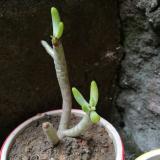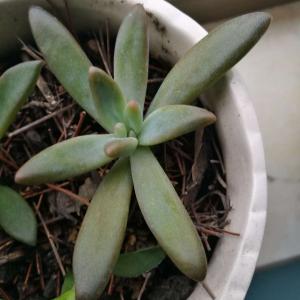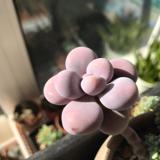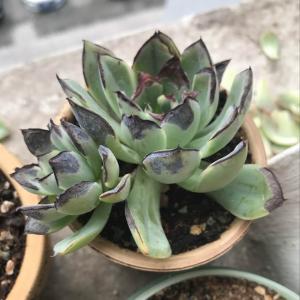求助
Katrina
2017年09月16日
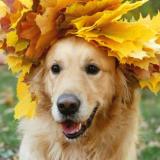
My Senecio Vitalis (Blue Chalk Fingers) plant keeps having limbs shrivel and die! Please help! I keep it out of direct sunlight and only water it every 3 to 4 days depending on need. I just separated the roots of the two plants and repoted a week ago.
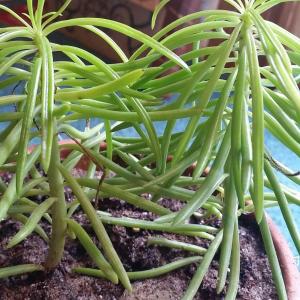

0
0
sunnyzou:maybe you hurt the roots when you repotting. no direct sunlight until they recovered growth.
Ueca:I know this sounds somewhat counter-intuitive, but try giving it a bit more sunlight.
文章
Dummer. ゛☀
2017年09月15日

Found in all apple-growing areas of the world, the codling moth (Cydia pomonella) is considered to be one of the most destructive pests of apples. Adults are gray to brown moths with a 3/4 inch wingspan. They have a chocolate-colored patch at the tip of each forewing and coppery transverse markings.
Codling moth larvae are pink or creamy white caterpillars with mottled brown heads that tunnel through apples directly to the core. As they feed, they push out mounds of fecal material, called frass, which gathers around the entrance hole. Damage lowers the market value of the fruit and makes it unfit for human consumption. Alternate host plants include pears, crabapples, walnuts and stone fruits.
Note: The codling moth was introduced to North America by the colonists more than 200 years ago and is now one of the leading pests in home orchards.
Life Cycle
Full grown larvae pass through the winter in a cocoon beneath loose bark or in orchard litter. Pupation takes place in the spring. Moths begin emerging about the time that apple trees are in bloom and lay an average of 50 to 60 eggs on leaves, twigs and fruits. Once eggs hatch the larvae feed briefly on leaves, then damage fruit by boring into the centers. Larvae feed for three weeks, then leave to seek a suitable place to spin cocoons. There are two generations per year.
Control
Scrape loose bark in early spring to remove overwintering cocoons and then spray All Seasons® horticultural oil to eradicate eggs and first generation early instar stages.
Beneficial nematodes are microscopic, worm-like parasites that actively hunt, penetrate and destroy immature stages of this pest. Spray on trunks and main branches, and also over the soil out to the drip line for a 60% to 90% mortality in pre-pupae.
Use pheromone traps to determine the peak flight period for moths, then release trichogramma wasps to attack eggs. Pheromone traps will also help reduce male moths where populations are low and trees are isolated.
Surround WP — a wettable kaolin clay — can be used to deter a broad range of fruit tree pests (and diseases), and will reduce codling moth damage by 50-60%. Apply before moths arrive and continue for 6-8 weekly applications, or until the infestation is over.
In areas of severe infestation, spray plant-derived insecticides when 75% of petals have fallen, followed by three sprays at 1-2 week intervals. These natural pesticides have fewer harmful side effects than synthetic chemicals and break down more quickly in the environment.

Codling moth larvae are pink or creamy white caterpillars with mottled brown heads that tunnel through apples directly to the core. As they feed, they push out mounds of fecal material, called frass, which gathers around the entrance hole. Damage lowers the market value of the fruit and makes it unfit for human consumption. Alternate host plants include pears, crabapples, walnuts and stone fruits.
Note: The codling moth was introduced to North America by the colonists more than 200 years ago and is now one of the leading pests in home orchards.

Life Cycle
Full grown larvae pass through the winter in a cocoon beneath loose bark or in orchard litter. Pupation takes place in the spring. Moths begin emerging about the time that apple trees are in bloom and lay an average of 50 to 60 eggs on leaves, twigs and fruits. Once eggs hatch the larvae feed briefly on leaves, then damage fruit by boring into the centers. Larvae feed for three weeks, then leave to seek a suitable place to spin cocoons. There are two generations per year.
Control
Scrape loose bark in early spring to remove overwintering cocoons and then spray All Seasons® horticultural oil to eradicate eggs and first generation early instar stages.
Beneficial nematodes are microscopic, worm-like parasites that actively hunt, penetrate and destroy immature stages of this pest. Spray on trunks and main branches, and also over the soil out to the drip line for a 60% to 90% mortality in pre-pupae.

Use pheromone traps to determine the peak flight period for moths, then release trichogramma wasps to attack eggs. Pheromone traps will also help reduce male moths where populations are low and trees are isolated.
Surround WP — a wettable kaolin clay — can be used to deter a broad range of fruit tree pests (and diseases), and will reduce codling moth damage by 50-60%. Apply before moths arrive and continue for 6-8 weekly applications, or until the infestation is over.

In areas of severe infestation, spray plant-derived insecticides when 75% of petals have fallen, followed by three sprays at 1-2 week intervals. These natural pesticides have fewer harmful side effects than synthetic chemicals and break down more quickly in the environment.
0
0
文章
Dummer. ゛☀
2017年09月15日

Slightly smaller than a housefly, adult apple maggots (Rhagoletis pomonella) are 1/5 inch long and have conspicuous black bands — resembling a W — running across their transparent wings. The larvae (1/4 inch long) are white, tapered maggots that tunnel throughout the flesh of fruit. They are often found in large numbers and can quickly reduce a beautiful apple to a brown, pulpy mess. External signs of maggot infestation appear as pinpricks made on the apple surface. These are often small, distorted or pitted areas.
Life Cycle
The apple maggot overwinters as pupae in the soil. Adult flies emerge in late spring and begin to lay eggs just under the apple skin. The eggs hatch, and the larvae begin to tunnel through the fruit. When mature, the maggot leaves through a small opening made in the side of the fruit and enters the soil. One or two generations per year.
Control
The majority of maggots leave the fruit several days after it has fallen from the tree. As a result, a certain level of control can be achieved by picking up and discarding the dropped apples.
Red Sphere Traps will greatly reduce damage and work well to capture and reduce the number of egg laying adults. Traps should be placed within the canopy just as trees are finished blooming. Hang spheres high in the brightest areas of the tree, 6-7 feet from the ground. Set out one trap for every 150 apples (2 traps per dwarf tree).
Beneficial nematodes are microscopic, worm-like parasites that actively hunt, penetrate and destroy the pupal stage of this pest. For best results, apply in the early spring or fall around the base of trees, out to the drip line. One application will continue working for 18 months.
Surround WP — made from kaolin clay — will suppress a broad range of insects and has shown over 90% control of apple pests. It also has a positive effect on fungal diseases like fire blight, sooty blotch and flyspeck.
Fast-acting botanical insecticides should be used as a last resort. Derived from plants which have insecticidal properties, these natural pesticides have fewer harmful side effects than synthetic chemicals and break down more quickly in the environment.

Life Cycle
The apple maggot overwinters as pupae in the soil. Adult flies emerge in late spring and begin to lay eggs just under the apple skin. The eggs hatch, and the larvae begin to tunnel through the fruit. When mature, the maggot leaves through a small opening made in the side of the fruit and enters the soil. One or two generations per year.

Control
The majority of maggots leave the fruit several days after it has fallen from the tree. As a result, a certain level of control can be achieved by picking up and discarding the dropped apples.
Red Sphere Traps will greatly reduce damage and work well to capture and reduce the number of egg laying adults. Traps should be placed within the canopy just as trees are finished blooming. Hang spheres high in the brightest areas of the tree, 6-7 feet from the ground. Set out one trap for every 150 apples (2 traps per dwarf tree).

Beneficial nematodes are microscopic, worm-like parasites that actively hunt, penetrate and destroy the pupal stage of this pest. For best results, apply in the early spring or fall around the base of trees, out to the drip line. One application will continue working for 18 months.
Surround WP — made from kaolin clay — will suppress a broad range of insects and has shown over 90% control of apple pests. It also has a positive effect on fungal diseases like fire blight, sooty blotch and flyspeck.

Fast-acting botanical insecticides should be used as a last resort. Derived from plants which have insecticidal properties, these natural pesticides have fewer harmful side effects than synthetic chemicals and break down more quickly in the environment.
0
0
文章
Dummer. ゛☀
2017年09月14日

Common in and around the home, ants range in size from about 1/32 to 3/4 inch long. They have three body parts (head, thorax and abdomen) and can be anywhere from a yellowish-red in color to black. Most ants are wingless, but winged forms exist during “swarming” or colony reproduction.
As a group, ants are important natural predators of many insect pests including flea and fly larvae, caterpillars and termites. However, there are times when it may be necessary to control ants especially when they enter our homes in search of food. Some ant species become problems in lawns and gardens when they build large unsightly mounds or protect aphids, mealybugs, scales and other insect pests from their natural enemies. Ants can also damage plants by tunneling around the roots causing them to dry out.
Tip: Look closely to determine if what you see is an ant or a termite. Ants have narrow waists and bent antennae. Termites have thick waists and straight antennae.
Life Cycle
All ants are social insects and live in colonies with three distinct types of adults called castes. Queens are larger than other ants and are responsible for egg laying. Some species have only one queen per colony whereas others have many. Males are responsible for mating with the queens; they do not participate in any other activities. Workers are sterile wingless females. They make up the bulk of the colony and are responsible for building and defending the nest, caring for the young and foraging for food.
New ant colonies are established by a single fertilized queen that lays hundreds of eggs. After about 30 days the eggs hatch into legless larvae that do not resemble adults. The queen cares for the “maggot-like” larvae until they pupate approximately 1-2 months later. Within three weeks the pupae transform into adult “worker” ants, which begin collecting food for themselves, the queen and for future generations of larvae. Eggs are laid continuously throughout the spring, summer and fall. Colonies overwinter in the soil, woody areas or in garden trash.
Note: Ants have pincer-like jaws and can bite although most do not. A few species are very aggressive and will inflict a painful sting. Here’s how to get rid of ants without harming your family, pets or the environment.
Control
Like all pests, ants require food and water to survive; by eliminating these basic necessities you can greatly reduce their numbers.
Store food and organic wastes in sealed containers, clean up all kitchen surfaces and empty trash daily.
Caulk cracks and crevices around foundations and apply Don’t Bug Me Spray to door and window jams to prevent entry from outside.
Where pipes and electrical wires enter the house spread Tanglefoot Pest Barrier to keep crawling pests outside.
Diatomaceous earth contains no toxic poisons and works quickly on contact. Dust lightly and evenly around areas where pest insects are found.
Apply Organic Insect Killer Granules around foundations, lawns and landscaped areas to eliminate or repel all kinds of crawling insects.
Dust Boric Acid lightly into cracks, crevices, wall voids and other insect hiding places. This fine powder clings to the legs, antennae and bodies of crawling insects and acts as a stomach poison when consumed during grooming.
Spray Orange Guard, made from citrus peel extract, to kill on contact. Approved for organic use, Orange Guard is a broad spectrum insect killer that’s safe to use indoors and out. Repeat applications may be necessary.
Safer Ant & Roach Killer is the first effective, truly organic aerosol that kills crawling insects in seconds. Best of all, it has a fresh citrus scent, so there is no chemical odor!
Tip: The best way to keep ants from coming indoors is to locate the mound and destroy the colony. While this is not always an easy task sometimes a chunk of jelly placed where ants are found will help. As the workers are attracted to the food source pay close attention as they carry it back to their nest. Set pre-filled outdoor bait stations where you find ant mounds or their trails. Botanical pesticides applied directly to the soil will also destroy existing mounds.
As a group, ants are important natural predators of many insect pests including flea and fly larvae, caterpillars and termites. However, there are times when it may be necessary to control ants especially when they enter our homes in search of food. Some ant species become problems in lawns and gardens when they build large unsightly mounds or protect aphids, mealybugs, scales and other insect pests from their natural enemies. Ants can also damage plants by tunneling around the roots causing them to dry out.

Tip: Look closely to determine if what you see is an ant or a termite. Ants have narrow waists and bent antennae. Termites have thick waists and straight antennae.
Life Cycle
All ants are social insects and live in colonies with three distinct types of adults called castes. Queens are larger than other ants and are responsible for egg laying. Some species have only one queen per colony whereas others have many. Males are responsible for mating with the queens; they do not participate in any other activities. Workers are sterile wingless females. They make up the bulk of the colony and are responsible for building and defending the nest, caring for the young and foraging for food.

New ant colonies are established by a single fertilized queen that lays hundreds of eggs. After about 30 days the eggs hatch into legless larvae that do not resemble adults. The queen cares for the “maggot-like” larvae until they pupate approximately 1-2 months later. Within three weeks the pupae transform into adult “worker” ants, which begin collecting food for themselves, the queen and for future generations of larvae. Eggs are laid continuously throughout the spring, summer and fall. Colonies overwinter in the soil, woody areas or in garden trash.
Note: Ants have pincer-like jaws and can bite although most do not. A few species are very aggressive and will inflict a painful sting. Here’s how to get rid of ants without harming your family, pets or the environment.

Control
Like all pests, ants require food and water to survive; by eliminating these basic necessities you can greatly reduce their numbers.
Store food and organic wastes in sealed containers, clean up all kitchen surfaces and empty trash daily.
Caulk cracks and crevices around foundations and apply Don’t Bug Me Spray to door and window jams to prevent entry from outside.
Where pipes and electrical wires enter the house spread Tanglefoot Pest Barrier to keep crawling pests outside.
Diatomaceous earth contains no toxic poisons and works quickly on contact. Dust lightly and evenly around areas where pest insects are found.
Apply Organic Insect Killer Granules around foundations, lawns and landscaped areas to eliminate or repel all kinds of crawling insects.
Dust Boric Acid lightly into cracks, crevices, wall voids and other insect hiding places. This fine powder clings to the legs, antennae and bodies of crawling insects and acts as a stomach poison when consumed during grooming.

Spray Orange Guard, made from citrus peel extract, to kill on contact. Approved for organic use, Orange Guard is a broad spectrum insect killer that’s safe to use indoors and out. Repeat applications may be necessary.
Safer Ant & Roach Killer is the first effective, truly organic aerosol that kills crawling insects in seconds. Best of all, it has a fresh citrus scent, so there is no chemical odor!

Tip: The best way to keep ants from coming indoors is to locate the mound and destroy the colony. While this is not always an easy task sometimes a chunk of jelly placed where ants are found will help. As the workers are attracted to the food source pay close attention as they carry it back to their nest. Set pre-filled outdoor bait stations where you find ant mounds or their trails. Botanical pesticides applied directly to the soil will also destroy existing mounds.
0
0
文章
Dummer. ゛☀
2017年09月14日

"How do I treat ants and sooty mold on a magnolia tree?" asked one reader recently. It is a common query. His question continued as follows:
"We have a four-year-old magnolia tree (4 inches in diameter and 13 feet in height) that has really never looked great but has always had nice white flowers in spring, at least. The leaves never got that real dark green look. Now, this summer, the leaves have started looking a lighter green and the bark has mold on it.
I have washed the mold off the bark and noticed at the base of the tree the bark is coming off about 4 inches up. I pulled the loose bark off, and under it there was a ton of ants. The layer of bark under that is still solid, but a few bore holes (the holes only go in a little bit, I think). We are in Florida."
Problems With Sooty Mold and Ants Actually Stem From Scale Insects
The ants and mold (it is probably the mold called "sooty mold") may be the effect, rather than the cause of your magnolia tree's problems. The real cause may be magnolia scale bugs. The scale insects secrete a liquid named "honeydew" that invites sooty mold. And because this honeydew -- true to its name -- is a very sweet substance, the ants like to feed on it. You can find information on organic ant control in a separate resource.
What Is Sooty Mold?
"Sooty mold" sounds disgusting, and it has an appearance to match.
It appears as a sickly, black film covering the bark and/or leaves of a plant. Known in scientific lingo as Capnodium, sooty mold is a kind of fungus.
As the University of Florida Extension points out, the sooty mold fungus, in and of itself, does not cause a direct problem for your plant, but rather an indirect one: namely, it inhibits the photosynthesis in a plant.
Photosynthesis is the very important process whereby the leaves of a plant convert nutrients into carbohydrates, by harnessing the energy derived from the rays of the sun. With a layer of sooty mold fungus covering the leaves of a plant, the sunlight cannot get through properly. The result is that the necessary photosynthesis can't take place, and the health of the plant suffers accordingly.
Scale insects are commonly the culprit behind this chain of events on magnolia trees. To fight these insects effectively, learn how to practice magnolia scale control. Other sucking insects also secrete honeydew, including:
Aphids
Mealybugs
Whiteflies
Take careful note that it is the sucking insects, rather than the sooty mold fungus or the ants, that you should be fighting. The fungus and the ants will go away once you have eliminated the sucking insects.
"We have a four-year-old magnolia tree (4 inches in diameter and 13 feet in height) that has really never looked great but has always had nice white flowers in spring, at least. The leaves never got that real dark green look. Now, this summer, the leaves have started looking a lighter green and the bark has mold on it.

I have washed the mold off the bark and noticed at the base of the tree the bark is coming off about 4 inches up. I pulled the loose bark off, and under it there was a ton of ants. The layer of bark under that is still solid, but a few bore holes (the holes only go in a little bit, I think). We are in Florida."
Problems With Sooty Mold and Ants Actually Stem From Scale Insects
The ants and mold (it is probably the mold called "sooty mold") may be the effect, rather than the cause of your magnolia tree's problems. The real cause may be magnolia scale bugs. The scale insects secrete a liquid named "honeydew" that invites sooty mold. And because this honeydew -- true to its name -- is a very sweet substance, the ants like to feed on it. You can find information on organic ant control in a separate resource.

What Is Sooty Mold?
"Sooty mold" sounds disgusting, and it has an appearance to match.
It appears as a sickly, black film covering the bark and/or leaves of a plant. Known in scientific lingo as Capnodium, sooty mold is a kind of fungus.
As the University of Florida Extension points out, the sooty mold fungus, in and of itself, does not cause a direct problem for your plant, but rather an indirect one: namely, it inhibits the photosynthesis in a plant.

Photosynthesis is the very important process whereby the leaves of a plant convert nutrients into carbohydrates, by harnessing the energy derived from the rays of the sun. With a layer of sooty mold fungus covering the leaves of a plant, the sunlight cannot get through properly. The result is that the necessary photosynthesis can't take place, and the health of the plant suffers accordingly.
Scale insects are commonly the culprit behind this chain of events on magnolia trees. To fight these insects effectively, learn how to practice magnolia scale control. Other sucking insects also secrete honeydew, including:
Aphids
Mealybugs
Whiteflies

Take careful note that it is the sucking insects, rather than the sooty mold fungus or the ants, that you should be fighting. The fungus and the ants will go away once you have eliminated the sucking insects.
0
0
求助
Pirate captain
2017年09月12日

沙漠玫瑰,到家2周左右,一切按老板说的养,现在开始黄叶,家里平均温度27°,天天晒太阳,4天左右浇水,黄叶是正常现象吗?不是应该怎么处理?

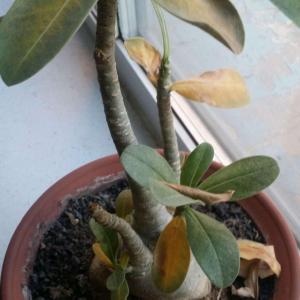




0
0
文章
权问薇
2017年09月12日

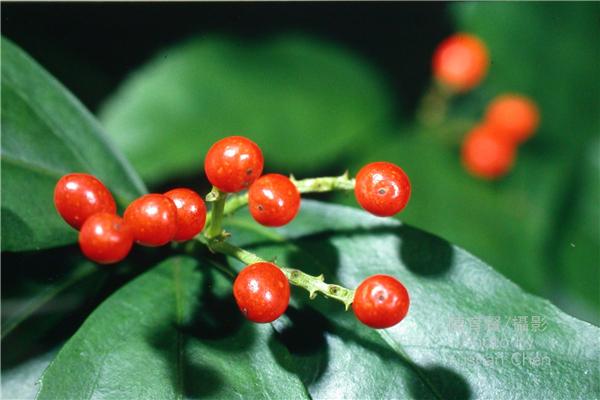
扦插繁殖
一般扦插繁殖是在3到4月进行,首先需要在长得特别健康的植株上选择1到2年生的枝条,将它们剪成2到节,长在10到15厘米之间的插穗,把它们捆起来。然后把它们的基端放在0.05ml/l的3号ABT的生根粉溶液里面浸泡两三分钟后,再放进1ml/l的NAA溶液里迅速蘸一下就可以扦插了,这样会明显增加成活率。插完之后一个月就能生根了,成活之后要及时松土,还可以适量的追肥,加快生长。
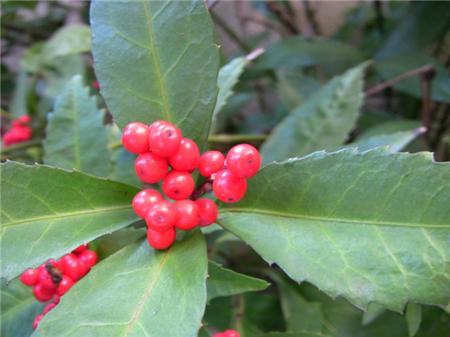
种子繁殖
一般可以在10到12月份果实成熟的时候来采取种子,然后按照晾份湿的细沙,一份种子的比例搅拌后放在室内比较干燥通风的地方放好,或者是也可以放在木箱子里贮藏,同样是置于通风的室内。等到第二年的2到3月份就可以拿出种子来播种了。大约过20天就能够出苗了。也需要在育苗的时候松土施肥,促进成长。
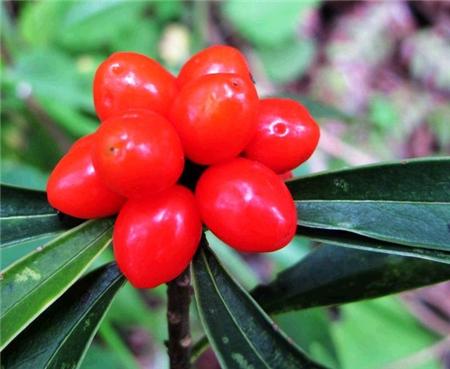
分株繁殖
这种方法适合在早春或是晚秋的时候进行,把草珊瑚在土壤上方10厘米的地方割下来,把剩下的挖出,按照茎秆分别切成带着根系的小株栽种。之后要连续的浇水养护,使土壤保持合理的湿度,及时施肥,除草。这种方法的成活率以及生长速度都很高。
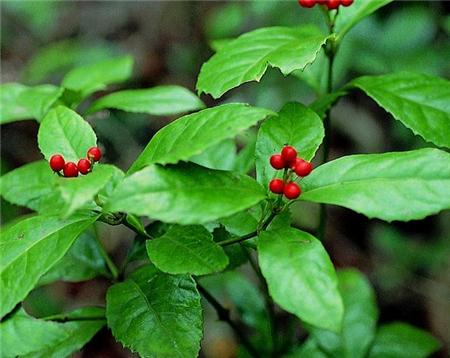
0
0
文章
权问薇
2017年09月12日

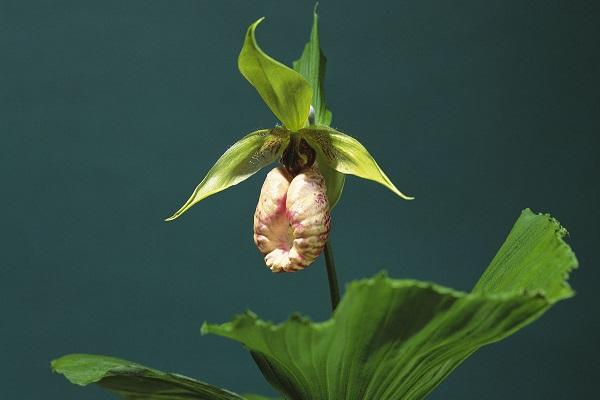
花盆与土壤的选择
#杓兰 最佳栽种时期是每年的3月至4月,秋天的10月至11月进行。杓兰需要透气的环境,所以在选择花盆时尽量选择素烧的陶瓷花盆,不建议使用塑料花盆与带有花纹图案的陶瓷盆。在土壤的选择方法,尽量使用原生态土。
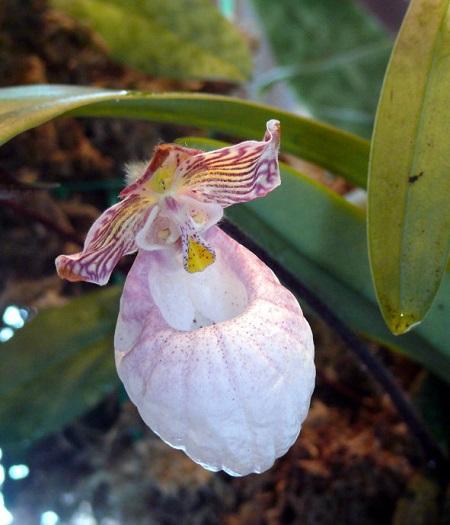
温度
杓兰的最佳生长温度是10度至20度之间,若温度超过25度,要立即进行降温,不然杓兰很容易被热死。在我国的南部与北部,在气温过高时,要移至有冷空气的室内生存,不然很难养殖成功。
浇水
杓兰在生长期内稍微缺水,便可导致期健康受损。所以要勤观察,若土壤有八分干的状态,刚需要浇水。每次浇水时一定要浇透。浇水的次数要根据土壤的干湿度而定。

光照
在阳光过强时,要做好适当的庇荫。想让杓兰晒阳关可以选择在上午9点之前,与下午6点之后进行。但在炎热的夏季,无论何时都不要使阳光直晒。
种植及培土
栽种前要先把新发出芽的枝条中的老旧叶子剪除干净,把已经腐烂根茎剪除。然后把已经处理好的带有新发芽的枝条平放在花盆里,上面覆盖薄土,要将新发的芽全部露出即可。最后用泡过水的白苔铺在花盆最上层,在浇水,要一次性浇透,但不能出现积
0
0
文章
素雅
2017年09月12日


种植时间
4月初。
花盆的选择
可以用多种器皿、花盆、箱子。但是其高度最好是30厘米以上。
土壤的选择
在花盆里放入约25厘米厚的泥土,尽量要细致的土壤。
加水
把花盆里注入水,水的高度约比土壤高3厘米即可。
催芽
需要另找一下器皿,作为荸荠催芽使用,里面可以放入木屑之类的东西做为荸荠的催芽的使用,如果可以找到稻杆之类的东西最好。把泡好的种子放入土壤中。尽量整棵埋进去。每天都要浇水,保持其的湿润,这样可以促使其快速发芽。

移植与定植
在荸荠发芽时后,挑选较大的,健康的移植与定植,移栽至带有水的土壤中。栽植的深度大约入土2厘米左右。
采收
到了冬季,荸荠的叶子会干枯掉,便可以采收。但若可以在冬至后立春前采收为最佳时间。
注意事项:移植与定植后,要保持花盆里的水就直是超过土壤2厘米,发现水量变少就要及时加水。若发现水质比较污浊,可以换水,除去其它生长物。
1
2


